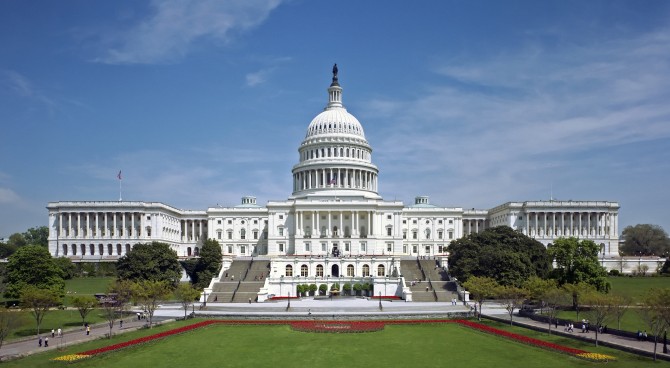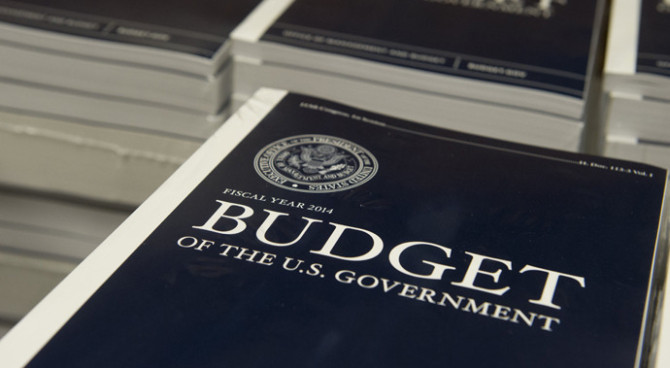If Democrats get their way, pandemic spending will become permanent and bankruptcy will get closer.
ET
For Democrats in Washington, the pencils all lack erasers and none of the calculators have a minus button. It’s always addition, never subtraction. The Biden-Schumer-Pelosi spending surge generated the highest inflation in 40 years, the highest interest rates since the subprime crisis, and the loss of the White House, Senate and House. Democrats still insist on no reductions in the post-pandemic spending that fueled their defeat.
Demands to increase healthcare spending are a charade to mask the Democrats’ fury over Republican tax reductions and spending cuts. After the One Big Beautiful Bill Act extended the 2017 tax cut, at a projected cost of $4.5 trillion, and cut spending by $1 trillion, Democratic activists insisted on a futile gesture. Senate Minority Leader Chuck Schumer has obliged, shutting down the government and calling the new law the “Mount Rushmore of fiscally irresponsible bills.”
Have Republicans been excessive in their tax and spending cuts? Hardly. Democrats may point to the Congressional Budget Office’s original budget projections but only by including the CBO’s revisions do the facts become obvious. Spending, not tax cuts, remains the driver of federal debt.
Our fiscal story should begin at the beginning, when President Trump took office in January 2017 with the CBO’s budget estimates released that month. The CBO projected federal revenue of $43 trillion for 2018-27. In later projections, the CBO estimated the 2017 tax cut of nearly $1.7 trillion—along with other legislation in the pandemic and under President Biden cutting revenue by $787 billion—would legislatively reduce revenue by $2.5 trillion during 2018-27. Based on simple math, federal revenue should drop to $40.5 trillion for this period. Instead CBO says total federal revenue for that period is $45.2 trillion, based on its actual and revised projections. That is $4.7 trillion more than the pre-2017 tax cut baseline if you include the revenue lost to the tax cuts. Has anyone heard that taxpayers paid more than their share?
What happened to spending since January 2017? CBO projected spending to total $52.5 trillion during 2018-27. Then the pandemic hit, and Mr. Trump and Republicans spent an extra $1.9 trillion in fiscal 2020 as well as $900 billion after the 2020 election. Did CBO revise its spending baseline upward by $2.8 trillion? No, CBO’s actual and revised projections say spending rose by almost four times the 2020 pandemic’s cost—$10.5 trillion, to $63 trillion for 2018-27. Has anyone in the federal government declared a mea culpa here?
In all, Messrs. Biden and Schumer’s legislation spent more in the fiscal year after the pandemic than Mr. Trump did during the pandemic. That added $6.8 trillion of extra spending over Mr. Biden’s four years and contributed to the national debt’s expanding by $7.5 trillion entirely from overspending.
Viewed from this perspective, the One Big Beautiful Bill Act’s tax cut of $4.5 trillion over 2025-34 doesn’t offset the higher actual and projected extra revenue of $4.7 trillion for 2018-27. The $1 trillion in net spending cuts is one-tenth the actual and projected overspending since 2017.
Now Mr. Schumer wants to add back $1.5 trillion of new spending, reversing 150% of the One Big Beautiful Bill Act’s small spending cuts relative to the total overspending since 2017. That would reward both Medicaid and ObamaCare, two of the most profligate spending programs.
Back in 2017, the CBO projected Medicaid spending for 2027 of $650 billion, the last year projected. Now it is $88 billion higher, at $738 billion. While the Republicans’ new law would reduce that to $688 billion, Mr. Schumer could conceivably add back 150% of the reductions to raise Medicaid spending in 2027 to $763 billion, working out to 96% growth since 2017.
The same applies to ObamaCare, which was projected in 2017 to cost $106 billion in 2027. Now it is at $119 billion, and Mr. Schumer’s reversal could take ObamaCare above the CBO’s most recent estimate to $127 billion, or 148% above its 2017 level of $51 billion. When federal spending more than doubles every 10 years, inflation should be expected, not surprising.
What Mr. Schumer is restoring isn’t healthcare benefits but fraud and abuse. His repeal of the One Big Beautiful Bill Act’s healthcare provisions would reinstate Medicaid emergency-room coverage for illegal aliens, block Medicaid work requirements on the able-bodied, restore states’ “provider tax” shell games, and end the twice-annual income verification to continue Medicaid coverage. The big expansion of health benefits to a family of four with incomes over $124,800 wasn’t in ObamaCare but a post-pandemic “Bidencare” add-on.
The bottom line is that the national debt, projected to increase by $9.4 trillion in 2018-27, has now surged to $21.7 trillion of new debt projected for 2026-35. The Republican Congress slowed but never reversed the post-pandemic spending surge and must resist Democrats’ latest demand for new deficit spending. Failing that, they must insist on full offsets such as the Clinton welfare standard of 35 hours a week to replace the One Big Beautiful Bill Act’s 20 hours on both Medicaid and food stamps, while also applying the work requirement to housing subsidies.
To slow America’s pace on the road to bankruptcy, Republicans must stop Mr. Schumer’s plan. Acquiescing to his shutdown demands would mean not one dime of the post-pandemic’s massive spending surge that generated high inflation and keeps interest rates high is ever recalled.
Mr. Solon is a senior fellow at the Hudson Institute.


